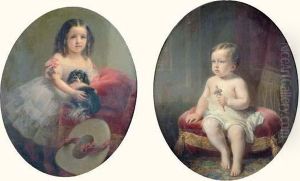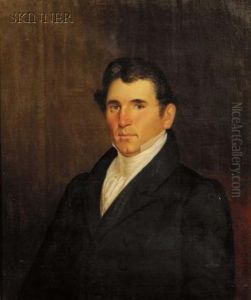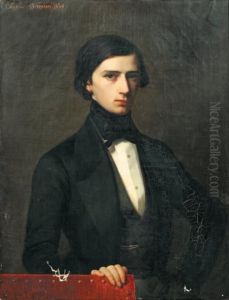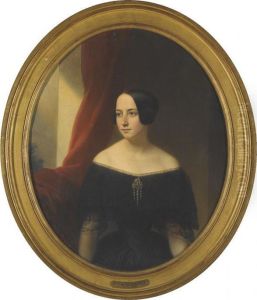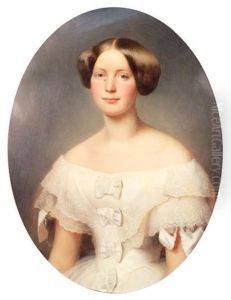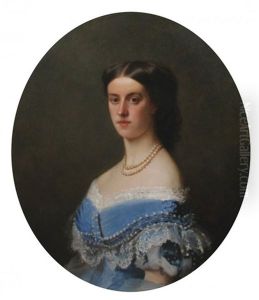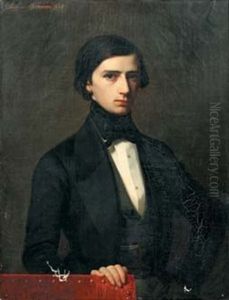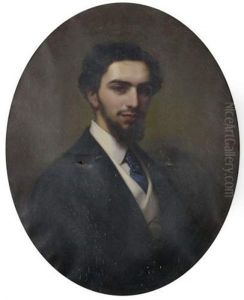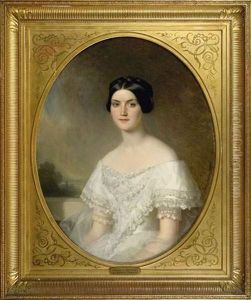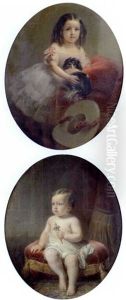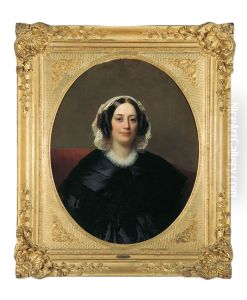Charles Gomien Paintings
Charles Gomien was a French painter and lithographer born on January 10, 1808, in Nancy, France. He was known primarily for his portraits and historical scenes. His artistic training began at the École de Dessin de Nancy, where he was initially a student before later becoming a professor. His work was influenced by the neoclassical style, which was predominant during the early years of his career, and he was known for his attention to detail and his ability to capture the likeness and character of his subjects.
Gomien's reputation grew as he produced a number of portraits of notable figures of his time. He exhibited his work at the Paris Salon, a prestigious art exhibition in France, and received recognition for his talent. His paintings are characterized by their refined technique and often depict subjects in thoughtful poses, surrounded by richly detailed interiors or landscapes.
Despite his success as a painter, Gomien also made significant contributions to the field of lithography. He embraced the medium and created a series of lithographs that were well-received by the public and critics. His lithographs often featured similar subjects to his paintings, including portraits and historical scenes, allowing him to reach a wider audience through the reproduction of his work.
Throughout his career, Gomien remained connected to his hometown of Nancy and contributed to the cultural life of the region. He was part of the local artistic community and was involved in various artistic societies. His legacy continues to be recognized in Nancy and beyond, with works displayed in museums and collections in France.
Charles Gomien passed away on December 3, 1876, in Nancy. His body of work provides a window into the artistic trends and cultural milieu of 19th-century France, and he is remembered for his skillful portrayal of the human figure and his contribution to the development of lithography as a fine art form.
